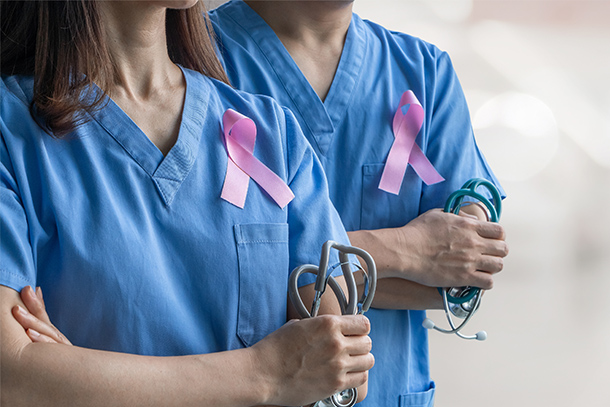
Meghan Vidt, assistant professor of biomedical engineering and physical medicine and rehabilitation, works to further the understanding of mastectomy and reconstruction surgery for breast cancer and the effects these surgeries have on patients. Credit: iStock/Chinnapong
Q&A with Meghan Vidt: Advancing recovery, decision-making for breast cancer surgery
October 25, 2022
Meghan Vidt, assistant professor of biomedical engineering and physical medicine and rehabilitation at Penn State, discusses her research in furthering the understanding of mastectomy and reconstruction surgery for breast cancer and the effects these surgeries have on patients. Her research will help better inform patients and surgeons on the impacts of different surgery approaches and potentially advance decision-making and recovery for patients.
For those who may not be aware of your research, could you describe the CUFF study?
The Characterization of Upper Limb Function Following Mastectomy and Reconstruction for Breast Cancer, or CUFF study, is looking to understand how different surgical approaches for breast cancer affect function. These surgical approaches include lumpectomy and mastectomy with reconstruction using either implants or autologous tissue flaps. We are ultimately trying to better understand the impact of the different surgical approaches on shoulder and upper extremity function, as well as health-related quality of life.
How does breast cancer surgery impact upper extremity movement and function?
That is just what we are trying to find out, because the literature on this topic is very sparse. According to the American Cancer Society, the five-year survival rate for those diagnosed with breast cancer is 90%. This means that most of those who are diagnosed with breast cancer will have the opportunity to return to their jobs and daily activities after cancer. However, there is emerging evidence showing that there may be some limitations to physical function that this population experiences. In order to help people not just survive breast cancer but to thrive following treatment, it is important that we understand the impact of treatment on physical function and well-being. Surgery, including lumpectomy or mastectomy with breast reconstruction, is commonly performed during the course of a patient’s treatment. However, the different surgical options require very different approaches and target different aspects of the patient’s anatomy. Our project — the CUFF study — is trying to better understand how surgery affects physical arm function and the specific outcomes associated with the different types of surgical procedures. This is important because if we know the specific ways patients may be affected following treatment, we can develop targeted strategies to intervene and offset the negative impacts to give patients the best chance possible to re-gaining physical function following treatment.
Does examining extremity movement and function help inform clinical treatment? How?
That is one of the main reasons why we are doing this research! Through the CUFF study we seek to better understand the effects associated with different surgical approaches, including how these effects are similar and how they differ across the different surgical options. Once this information is known, we will be able to partner with our clinical collaborators to develop novel strategies to incorporate this information into the clinical treatment decision-making process. For those patients who have a choice in their surgery, having a better understanding about the functional effects of the available surgical options would allow them to choose their surgery to better align with their post-treatment goals. This information would also help clinicians have conversations with their patients during treatment planning to help them to better anticipate the post-surgical effects of their treatment. Additionally, the information we will learn through the CUFF study will help us to tailor post-surgical rehabilitation to more specifically address the functional limitations associated with each surgical approach.
What technologies are you using to understand the effect of breast cancer surgery on movement and function?
The CUFF study is a cross-sectional design, with measurements taken before and after surgery. These measurements include assessments of arm strength and mobility, as well as self-report questionnaires about physical function and health-related quality of life.
What’s next for your research? Is there anything else you want people to know about your research?
In addition to the measurements we are taking with the CUFF study, our research team, spearheaded by my graduate student Josh Pataky, is also working to use these measurements to develop a computational model that represents the surgical breast cancer population. Developing models is an efficient method to examine the biomechanical effects of the different surgeries and map these changes to physical function. Long-term, once these models are developed, they could also be a helpful visual tool for doctors and patients alike to better understand the anticipated functional impacts associated with the different surgical options.



